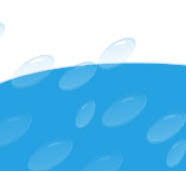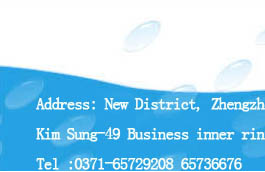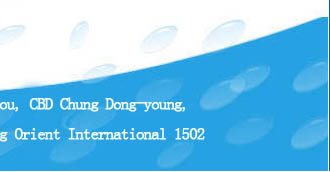Pharmaceutical water is usually produced by distillation, ion exchange, RO or other reasonable technologies, and there is not addtives in the permeate water at all..
We usually use the following three technologies to produce purified water:
Two stage RO
One stage RO + mixed bed(demineralization)
One stage RO + EDI
Mix bed must be periodically regenerated to remove contaminant ions sticking to the resin, that will be harmful to environment by using large quantity of chemicals (acid&alkali) and water during the regeneration. However, EDI is a technology which combines ion exchange,membrane filtration. EDI system replaces conventional mixed beds to produce deionized water,it does not require shutdowns for replacing resin beds or for resin regeneration using chemicals. So one stage RO+EDI is more superior to one stage RO+Mixed bed.
One Stage RO
Natural osmosis occurs when a semi-permeable membrane separates two fluids of different salinity. The fluid with the lower salinity will pass through the membrane until the salt solution becomes equal on both sides of the membrane.
Reverse osmosis (RO)is the reverse of normal osmosis process,it occurs when the water is forced by pressure from higher salinity solution to permeated water side across a semi-permeable membrane,the memebrane allows the passage of water, but not impurities, organics, ions etc. The rejection rate can usually reach above 97%, and the highest will reach 99.8%
The contaminants such as inorganic salt, bacterias,virus, glucides,amino acid will be removed through RO system. Therefore to get ideal purified water.
We use the membrane elements ESPA series from Hydranautics Company featuring high performance, ultra low pressure needs, high productivity and energy savings, 4 inches and 8 inches elements have been frenquently used.
The Operating Conditions of One Stage RO System
|
Item |
Run Conditions |
Item |
Run Conditions |
|
Operating Pressure of Pretreatment System |
0.3MPa |
Operating Pressure of RO System |
1.05MPa |
|
Operating Temperature |
5℃~40℃, |
PH of Feed Water for RO System |
4~9 |
|
Control Mode of Main System |
manual、automatic (optional) |
Power Requirements |
Three-phase four-wire AC380V/50HZ |
|
Control Mode of Pretreatment System |
Manual valves、fully automatic solenoid control valves, fully automatic multiport control valves (optional) |
Spefications of JNB One Stage RO System
|
No |
Model |
Permeate Flow(t/h) |
Power Consumption(kw/h) |
Control Mode |
Specifications for RO Membranes |
|
1 |
JB-ROY300 |
0.3 |
2.5 |
manual、automatic (optional) |
ESPA4040 |
|
2 |
JB-ROY500 |
0.5 |
3.0 |
manual、automatic (optional) |
ESPA4040 |
|
3 |
JB-ROY750 |
0.75 |
3.0 |
manual、automatic (optional) |
ESPA4040 |
|
4 |
JB-ROY1000 |
1.0 |
3.5 |
manual、automatic (optional) |
ESPA4040 |
|
5 |
JB-ROY1500 |
1.5 |
4.5 |
manual、automatic (optional) |
ESPA4040 |
|
6 |
JB-ROY2000 |
2.0 |
5.5 |
manual、automatic (optional) |
ESPA4040 |
|
7 |
JB-ROY3000 |
3.0 |
6.5 |
manual、automatic (optional) |
ESPA4040 |
|
8 |
JB-ROY4000 |
4.0 |
7.5 |
manual、automatic (optional) |
ESPA4040 |
|
9 |
JB-ROY5000 |
5.0 |
8.5 |
manual、automatic (optional) |
ESPA4040 |
|
10 |
JB-ROY6000 |
6.0 |
9.5 |
manual、automatic (optional) |
ESPA4040、ESPA8040 (optional) |
|
11 |
JB-ROY8000 |
8.0 |
16.5 |
manual、automatic (optional) |
ESPA4040、ESPA8040 (optional) |
|
12 |
JB-ROY10000 |
10.0 |
17.5 |
manual、automatic (optional) |
ESPA4040、ESPA8040 (optional) |
2、E D I (Electrodeionization)
EDI(Electrodeionization)removes ions from water using conventional ion-exchange resin. However, in EDI ,an electrical current is used to regenerate the resin continuously, eliminating the need for periodic chemical regeneration.
EDI stacks are the heart of an EDI system,a single stack has the basic structure of a deionization chamber. In the chamber, ion exchange resins are packed between ion exchange membranes (cationic and anionic),only the ions can pass through the membranes, the water is blocked in the dilute flowing out of the stack. When the system applies DC electrical field to the single EDI stack, charged ions are discharged to regenerate the ion exchange resins,all the processes of EDI have been regenerated through electricity continuously, so it’s also called CDI(continuous deionization).
The EDI system is used to produce ultrapure water(conductivity <2μS/cm), the rejection rate of which is more than 99%. Weak electrolyte within the water, such as silicic acid, boric acid,carbonic acid,ammonia etc, can be removed effectively. The feed water to the EDI system must be one or two-stage RO permeate or better, and the conductivity of RO is usually 2-40μS/cm(25℃).
Operating Conditions of EDI
|
Feed Water Pressure |
< 0.4MPa |
Feed Water PH Range |
6.0~9.0 |
|
Hardness of Feed Wate(Based on CaCO3) |
< 0.75 ppm |
Total Oganic Carbon(TOC) |
<0.5 ppm |
|
Dissolved Silicon |
<0.5 ppm |
Residual chlorine |
<0.01 ppm |
|
Fe、Mn、H2S |
<0.5 ppm |
Operating Temperature |
5℃~35℃ |
|
Total Exchangebale Anions |
<25ppm |
Total Exchangebale Cations |
<25ppm |
|
Total Exchangebale Substances (Based on CaCO3) |
<50ppm |
|
|
Specifications of EDI
|
Model |
Voltage (V) |
Electric Current(A) |
Flow Rate (m3/h) |
Weight (kg) |
|
JB-200 |
15~25 |
2~6 |
0.2~0.4 |
20 |
|
JB-500 |
35~50 |
2~6 |
0.4~0.7 |
26 |
|
JB-1000 |
60~90 |
2~6 |
0.9~1.2 |
32 |
|
JB-2000 |
115~180 |
2~6 |
1.0~2.0 |
48 |
|
JB-3600 |
180~300 |
2~6 |
2.0~3.5 |
74 |
Notes: Other flow rate available on request.


